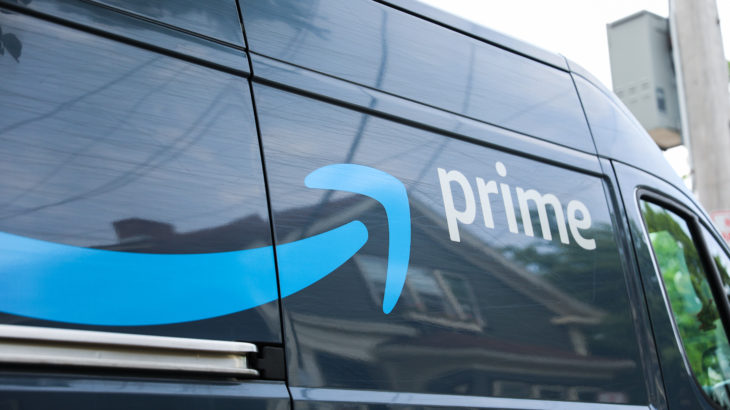Scaling a business on Amazon can be a game-changer, and using a strategic approach can help entrepreneurs reach their goals. But where do you start, and where do you go from there?
Experienced Amazon seller and University of Utah alumnus Josh Hadley provided insights to help you succeed in a Lassonde for Life workshop titled “How to Scale on Amazon.” Lassonde for Life is a free entrepreneurial support program for University of Utah alumni.
In Hadley’s workshop, he provided seven steps for scaling on Amazon. Read about them below. Using these steps can help entrepreneurs maximize a brand’s growth potential on Amazon and achieve sustainable success.
Hadley has an undergraduate degree in finance and an MBA from the University of Utah’s David Eccles School of Business. He is the CEO and founder of Hadley Designs, a company that sells on Amazon and is known for high-quality paper goods and stationery.
Determine Demand
Demand for products on Amazon can be determined using software tools such as Helium 10 or Jungle Scout. These tools can provide insights into sales volume, revenue estimates, and competition for specific keywords. Conducting keyword research can help identify how many units of similar products sell monthly. Analyzing top sellers and their variations can help understand market trends. This data will help gauge whether there’s sufficient demand for a product and can guide strategy for entering a market.
Competitive Analysis
Conducting a competitive analysis can help scale on Amazon. To stand out in a crowded marketplace, differentiate a product beyond just price. Understand the market to innovate in design, functionality, and quality. Also, ensure your pricing strategy is profitable after accounting for all fees. This approach will help you maintain a competitive edge and achieve sustainable growth on Amazon.
Logistic Strategy
Determining an effective logistics strategy is vital for scaling an Amazon business. There are two primary fulfillment options: fulfillment by Amazon (FBA) and fulfillment by merchant (FBM). FBA is generally more cost-effective and can boost conversion rates. Products become Prime-eligible, offering one- to two-day shipping, which customers prefer.
Alternatively, FBM allows sellers to handle fulfillment themselves, ideal for those with a warehouse. However, FBM lacks the Prime badge, potentially resulting in longer shipping times and lower conversion rates. For those starting, testing the market with FBM from home can be a practical strategy, shipping small quantities to gauge demand before committing to FBA.
Create Your Product Listing
Creating a great product listing maximizes visibility and drives conversions on Amazon. Keyword optimization ensures a product appears in relevant search results.
The main image of a product can capture attention amidst competition. “Your main image on Amazon is crucial. It’s got to be so good that people stop in their tracks and click on your listing,” Hadley said. Software tools can test multiple main image options and estimate which will resonate most with your target audience.
Secondary images are important as well, and these are what ultimately convert browsers into buyers. Many shoppers don’t read the bullets or descriptions, so secondary images must effectively communicate the value and features of a product. Tools can help test different image orders and gather feedback to optimize a listing for maximum conversion potential.
Go Live
After optimizing a product listing with compelling images and keywords, it’s time to go live. The first 30 days, or “honeymoon period,” are crucial for success on Amazon. Ensure ads are running on day one and leverage email and social media audiences to drive traffic to a listing. Utilize the Amazon Vine Program to quickly generate reviews and avoid review manipulation tactics that could lead to account suspension. Start with a low price to attract initial buyers and monitor Amazon’s temporary high rankings to maximize sales. Running Amazon ads from the start can help drive traffic, and if budget permits, consider social media ads to boost more visibility.
Advertising Strategy
Opinions about advertising strategy on Amazon vary widely among sellers. There is no one-size-fits-all approach. Outsourcing to an agency to create ads is an option, but they might not give ads careful attention. It’s helpful to understand the basics of Amazon’s pay-per-click (PPC). It is an online advertising model where advertisers pay a fee each time one of their ads is clicked. PPC advertising allows sellers to bid on keywords relevant to their products, and they pay only when a potential customer clicks on their ad.
Drive External Traffic
Driving external traffic to your Amazon listings can help increase sales. Utilize ads on platforms like Facebook, Google, and TikTok, and collaborate with influencers and affiliates to boost visibility. “Amazon loves outside traffic, and if you send outside traffic that converts and buys your product, Amazon is tracking it and increasing your organic rankings,” Hadley said. An omnichannel presence, where potential customers discover your products across various platforms but finalize purchases on Amazon, can be highly effective. Embrace these strategies to maximize growth on Amazon.



